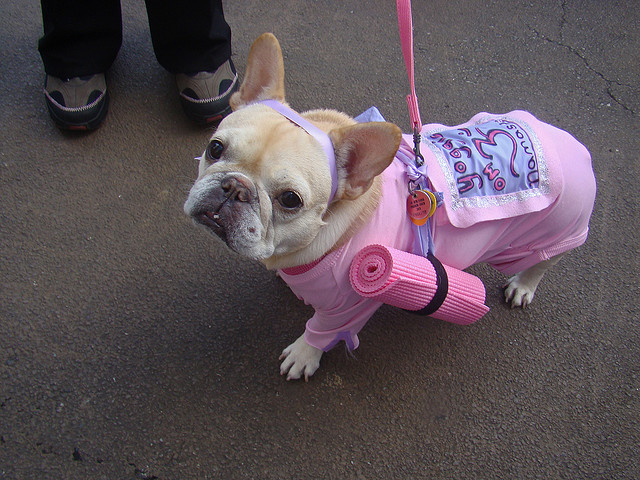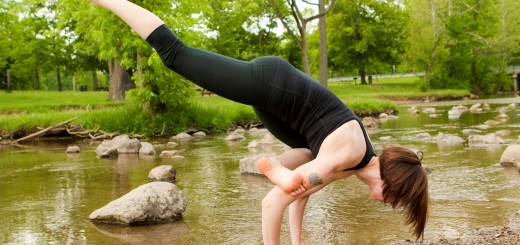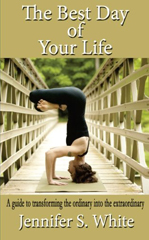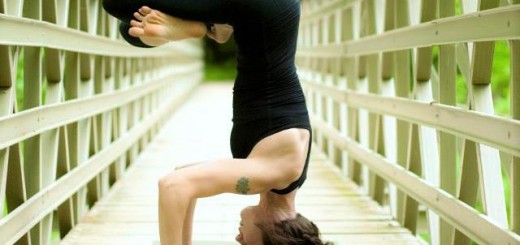5 Ways to Advance & Shine in Upward Dog.
Upward-facing dog might be one of the top 10 yoga poses (after all, it is in the sun salute series), but this pose is not simple or even for many yogic bodies, regardless of their time spent on the mat.
However, the more time I spend shifting my hips from upward-facing dog to the inverted-V of downward-facing dog, the more I realize how complex this posture is.
Because many yogis (and non-yogis) incorrectly assume that the more time we spend inside of a yoga pose, the easier it becomes. While the pose might become more familiar—and possibly physically accessible, too—the shift towards being able to feel micro-movements of the body surely arises the more and more we practice.
I mean, up-dog is actually a pretty strong backbend—and one that takes a long-term relationship to feel out.
I’ve been practicing yoga since I was a teenager, and I’ve had a near-daily vinyasa practice for about nine years—yet I’m still in awe of this pose.
So here are five ways to help us all get more out of our upward-facing dog:
1. Practice child’s pose.
While child’s pose can surely be a great “rest and come back to your breath” pose, it can also help teach proper arm alignment.
Start in child’s pose with arms extended long in front of you and press into the hands as you lift your forearms away from the earth (this is often referred to as the rebound effect).
Next, begin to wrap your triceps in and down, creating the sensations of openness throughout the shoulders and softening in the upper trapezius (at the base of your neck).
From there, internally rotate through the forearms as you also press into the base of your index fingers and thumbs.
Remember this same arm engagement for your upward-facing dog and then…
2. Take this into your downward dog.
Once you’ve begun to access this complicated maneuvering of your arms during child’s pose, start by taking these actions into your down dog.
Once in downward facing dog, bend your knees to focus initially on the upper body.
Stretch and reach through the arms—particularly from the imaginary line running from the tip of your pinkie fingers to the shoulders—and the spine and side-waist muscles without crowding your neck (keep the broad, soft spaciousness of the upper traps you had in child’s pose). Preserve this and straighten the legs.
Recreate the tricep wrap from child’s pose, noticing that your elbow creases will begin to face the top of your mat, and equally feeling the pronation of the forearm—this action of externally rotating your upper arms at your shoulders while still pressing into your inner hand. It’s more challenging than you’d think, so be patient.
One tip is to focus this internal movement of the forearm from above your wrist. If you focus too strongly on perfecting the tricep wrap and then just pressing through your inner hand, too, you might strain the wrists or elbows over time.
Another personal tip from a joint-sensitive yogi: keep your elbows straight but not locked. A micro-bend is okay but, honestly, bending the elbow too much puts strain on that joint once you get into your upward facing dog.
3. Reach through your toes and press down.
The action of your legs is crucial to creating healthy spinal curvature during upward dog.
Think of how you used the press of your hands in your child’s pose to lift energetically up through the forearms—creating lightness and ease and, simultaneously, activity—and then use your legs in a similar fashion to get more lift through the upper spine, so that you don’t dump into the lower back.
Reach actively through the legs like you’re trying to touch the back of your mat and then press down evenly through every toenail, including and especially the pinkie so that you lengthen completely through the lower spine.
4. Slightly tuck your tailbone.
In all backbends, it’s wise to lengthen through your lower spine by engaging your lower abdominals and lengthening the tailbone toward your heels.
It’s kind of like you’re trying to create a forward bending action within your backbend—and to me this is the epitome of yoga—this fusing of opposing forces.
Moreover, you want to feel evenness throughout the entire length of the spine—and this tuck will help.
5. Pay attention to your chin.
Your chin will help you get in touch with the degree of curvature in your neck.
For many bodies, not looking up in upward dog is best—keeping a long, wrinkle-free back of the neck. For all bodies, however, it’s best to not jut out your chin regardless of where you take your gaze and the degree of arc you take to your cervical spine.
I’m not suggesting that you overly tuck your chin during this posture, but do make sure that you’re not jutting it out (this is so common, unfortunately, in most backbends, not just up-dog).
As yoga practitioners, we visit upward dog regularly, and, much like life, the opportunities for true growth and transformation often happen right here, in the spaces and places that we frequently inhabit but become too cozy and familiar with.
And there are so many ways to ceaselessly advance within a posture like up dog, but the most important thing is to never take ourselves or our practices too seriously.
So have fun, play around and feel the true opening and evenness that can accompany a well-refined upward-facing dog—because when we expand and open up in backbends, we’re also opening our hearts up to all that life has to offer.
It’s time to shine—what are we waiting for?
Photo: istolethetv/Flickr.
This article was first published by elephant journal.











1 Response
[…] another interesting way to change it up is to check out a different yoga style, teacher or time slot if […]